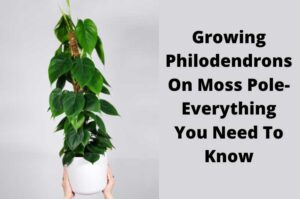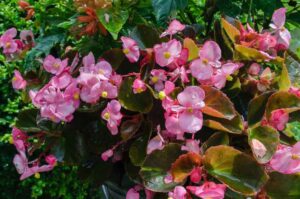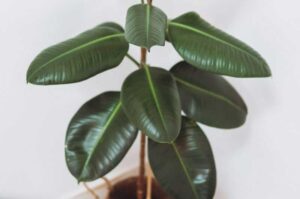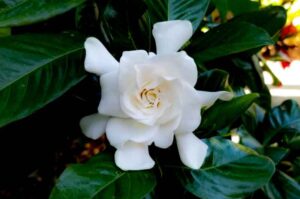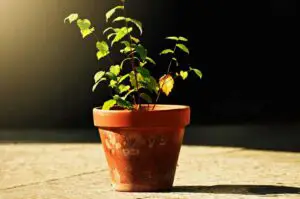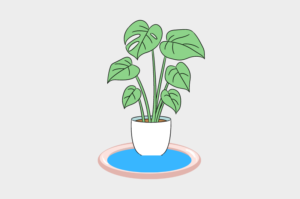How To Make Hoya Grow Faster? (Easy fixes)
Hoya is a beautiful creeping vine mostly seen around the kitchens and balconies. It is a low-maintenance tropical plant that grows slowly to moderately. If your Hoya plant is growing too slow, this article will help you to find out, How to make Hoya grow faster.
To make your Hoya plant grow faster, provide them moist well-drained potting soil, a humid environment with temperature ranging from 60°F to 70°F, and prolonged exposure to bright indirect sunlight. Application of balanced liquid fertilizer once a month, can also help your Hoya plant to grow fast.
Other than the above-mentioned factors, there are additional details that will make your Hoya plant grow faster. So, in order to develop these beauties, you’ll need to be well-versed in how to deal with any difficulty. And that is precisely what we will be talking about in this post today. Let’s get started:
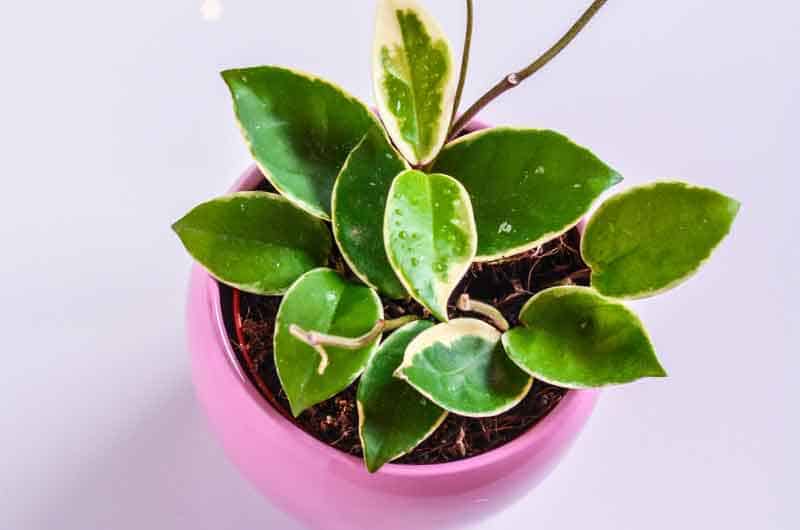
How fast does the Hoya plant grow?
It really depends on the Hoya variety you are growing. The Hoya varieties having small leaves like the Hoya bella, or Hoya linearis grow really faster. They show significant growth within a period of 4 to 6 months.
However large-leaved Hoya varieties take a longer time to grow. It is obvious because they need more energy and more time to grow their individual leaves.
Why is your Hoya plant not growing?
Here are a few reasons for which your Hoya plant is growing slowly, or not growing at all.
Wrong watering habits
Low-water conditions are ideal for Hoya plants. Too much or too little moisture in the soil will either suffocate or dry your Hoya plant to produce healthy growth. It is very simple to overwater them, and difficult to understand when they are underwatered.
Let’s check the two common watering problems-
Overwatering
Although Hoyas like wet soil, their tiny root systems are liable to root rot.
Applying too much water will create a waterlogging condition. The stagnant water at the crop root zone is harmful to the plant. It will suffocate the plant root and hampers root respiration.
If kept in wet circumstances for a long time, overwatering will lead to negative consequences such as root rot.
In Hoya, water is stored in the thick stems and leaves. Overwatering will clog the air pores in the soil. The roots will be then deprived of oxygen, resulting in slow growth in Hoya.
How to prevent overwatering in the Hoya plant?
- Allowing water to flood the pot is not a good idea. Allow the soil to dry fully. Give time for the top one or two inches of soil to dry out before re-watering works well.
- Use water that has been resting for at least 24 hours in an open container. This will allow the water to remain for a while. Thus, chlorine, fluorine, and other pollutants found in tap water will cause no harm to the plant and will gradually disperse into the air.
- The water will also have to be at a comfortable temperature for the Hoyas.
- Empty the saucer beneath the container of any excess water. If the extra water is left on the saucer, it may wick up into the container, keeping the soil overly wet.
- Use a small pot with appropriate drainage holes. A small pot will not hold excess water and holes will drain the excess water.
- Use well-drained potting soil for better drainage of stagnant water. You can prepare your own customized potting soil at home. The addition of cocopeat, perlite, and pumice will make it more free-flowing and well-drained.
Overwatering problem should be resolved as soon as possible, because, once the roots started rotting, it will be difficult to control the root rot issue.
Underwatering
Little watering will dehydrate the plants. As a result of this, the tiny roots of the Hoya plant dry up quickly. During the summer and winters these plants grow the most, so to be hydrated the plants need proper watering.
How to prevent underwatering in the Hoya plant?
Following measures will prevent your Hoya plant from underwatering.
- Always check the soil moisture, if it is too dry, water immediately.
- Keep your plant away from direct sunlight. It will prevent your plant from sunburn and also prevent quick drying of potting soil
- The addition of cocopeat will improve the physical structure of your potting soil. It is useful to prevent both overwatering and underwatering.
- Water your Hoya plants in the morning. This helps the plant keep its moisture throughout the day. Distribute the water evenly over the potting soil until it drains out of the drain holes at the container’s bottom.
Underwatering is an important point you should take care of, for all your indoor plants. Because water is the most important factor that drives the photosynthesis in green plants.
You may also like this article- How do self-watering pots work? Complete working principle of Self-watering pots.
Wrong selection of potting soil for your Hoya plant
When it comes to cultivating houseplants, it goes without saying that potting soil is crucial. Your Hoya will not grow if you do not use the correct potting soil. Hoyas should be planted in a lightweight, well-draining soil mix.
Overly saturated soil may not only stifle your Hoya’s growth, but it may also kill it. The success of your Hoya depends on well-draining soil with a well-nourished mixture of soil.
Ideal potting soil for Hoya plant–
Here is an ideal potting soil for your Hoya plant.
- Combine two parts of normal potting soil, one part perlite, and one part orchid bark for proper growth. You can even use the mixture of pine bark, perlite, and peat moss. The soil mix from one part pine bark to two parts peat moss. With a little dolomitic lime added to decrease the acidity. Pertile is used to lightening and improve its drainage capacity.
- You can use the cactus or succulent potting soil to add aerating additives like pumice, perlite, or gritty sand.
- You can also make a combination of equal parts coconut coir and aerating ingredients. This pH-neutral, nutrient-holding capacity increases and improvise the alternative to peat moss.
- Worm compost is another alternative to make the soil fertile. Watch the video to know more about worm compost: https://youtu.be/7Mqb5vicCOc
Lastly, to have an appropriate soil mixture, try to follow these proportions:1/3 potting soil, 1/3 succulent and cactus mix, and a third of orchid bark, coco coir, and a few handfuls of worm compost as a top dressing.
Overexposure to Sunlight
This may seem like the most obvious care recommendation, yet many people mistake Hoyas for low-light plants. They aren’t at all.
Hoyas do best in bright, indirect sunshine. While they can withstand full light in the spring and fall, the summer sun can burn the succulent-like leaves and bleach the color. This will stop the plant from growing.
Ideally, your Hoya plant should receive at least 6 hours of bright, indirect sunshine every day.
Ideal light condition for Hoya plant-
Getting a good light condition is important for the Hoya plant.
- Light from the west or south-facing window is best for growing Hoyas inside. You can also keep the plant in the corner next to a north-facing door and an east-facing window.
- Artificial light will undoubtedly help Hoyas. Keeping the light at a high level not only helps the Hoya plant develop faster, but also keeps the soil from being too wet. you can buy one for yourself online.
- In the summer, keep it out from the afternoon light and away from hot, bright windows. During the colder winter months, you may need to relocate yours to a more lighted place.
You may also like this article- Is my plant getting too much light? Can too much light kill a plant? How light duration and light intensity affect plant growth?
Temperature Stress
Hoyas are tropical plants that thrive in warm climates. Even some that enjoy mild daytime temperatures will cease growing if the temperature falls below their ideal range.
When temperatures drop below 60°F (16°C), the growth of Hoya slows down. The plant begins to experience actual harm below 50°F (10°C).
Some Hoyas like temperatures in the 60s and 70s degrees. This is ideal for indoor growers, as many prefer to maintain between 60 and 70 degrees. While some cool-temperature Hoyas prefer temperatures below 80 degrees. The great majority can endure temperatures as high as 95 degrees.
How to prevent temperature stress
- Cold drafts should be avoided.
- Just make sure your Hoyas aren’t too close to any air conditioning or heating vents, or leaking window.
Low Humidity levels
Humidity is a favorite thing of Hoyas. In reality, a humid environment is critical for the growth of some species, as it stimulates the development of stronger roots. If the humidity is high, Hoyas can still grow quickly in relatively moderate light.
Low humidity also causes the plant to transpire more, which dehydrates them easily. If your Hoya isn’t growing then increasing humidity can make it grow quicker.
How to maintain a Higher Humidity level around your Hoya plant?
- To increase humidity, you can use a pebble tray. Fill the saucer halfway with water and stones. Place the plant on the pebbles, but make sure the drain holes and/or the bottom of the pot aren’t flooded. To know more about pebble trays, check this out: https://youtu.be/QNZTVfobDmA
- Misting a couple of times, a week should also help to grow your Hoya.
- Using a humidifier is also a great idea to keep the surroundings humid.
- Also, you should consider providing some space in between your plants so that air ventilation can uninterruptedly take place.
- The fungus may be an issue with all that dampness, which is why adequate air movement is essential.
- Too many Hoyas crammed together with little room between them will decrease the fresh air. So, Hoyas should be kept separately.
Improper use of Fertilizers
The Hoya plant is mostly a leaf plant, so it needs a lot of nitrogen to thrive. High nitrogen fertilizer should be applied to new plants regularly. Apart from Feeding them with nitrogen fertilizer one can even use phosphorus and potassium.
Fertilizers should be used with caution on these plants. Fertilizing houseplants in late autumn and winter is a bad idea because that is when they need to relax.
Due to excess use of fertilizer, salts deposited near the roots of Hoyas leading to stunted growth. Avoid fertilizing a stressed houseplant, such as one that is bone dry or dripping wet.
Solutions
- Use a balanced water-soluble fertilizer, once or twice a month to promote growth.
- To stimulate flowering, switch to a high-phosphorus fertilizer. It is recommended that using phosphorus fertilizer after your plant has reached a healthy size.
- Always use fertilizer after watering. Apply the diluted fertilizer to the Hoya as direct applying of fertilizer will stop the plant from growing. A dry Hoya’s roots may be harmed by fertilizer.
- You can even feed the plants with a light application of worm compost for proper growth. Always apply worm compost with the following of a light layer of soil with soluble fertilizers. You can apply the worm compost in 1/4 to 1/2″ layer of the soil for a small plant.
You may also like this article- How to make the best homemade fertilizers for your indoor plants
Disease and pest attack
Hoyas are vulnerable to pest attacks and diseases. Even if you are taking care of your Hoya plants, there is a huge possibility that they might invite some unwanted guests.
Hoya attracts aphids, mealybugs, and spider mites are sap-sucking pests. Hoya leaves are also eaten by several caterpillar species. If you already have a large population of whiteflies and thrips in your yard, they can become a nuisance and infect your Hoyas. Snails and slugs are the only additional pests to watch out for.
How to prevent your Hoyas from pest attack?
- Neem oil can be used to manage all of these pests. Simply spray neem oil on all surfaces of the plant, and these common pests will be eliminated in no time.
- Whiteflies and thrips can be controlled using insecticidal soaps like Safer Soap.
- To get rid of caterpillars on your plants, use Monterey BT.
- To keep snails and slugs at bay, use a product like Garden Safe Slug & Snail Bait.
Diseases and disorders in Hoya
The hoya is also susceptible to fungus infections. Botrytis blight, which appears as grey spots on your plant, can cause rot and death.
Hoyas are very much into the terrible root rot. Moisture in the soil encourages the growth of fungi.
Sooty mold is the most prevalent pathogen among hoya producers. This black mold grows on sticky leaves that have been exposed to plant saps or nectars.
On the leaves of the hoya plant, botrytis blight can develop. This begins as grey fungal spots around the plant’s core. It might cause leaves to become mushy or collapse as it progresses.
Solutions
- Sooty mold is a simple problem to solve. With a wet towel, wipe away the mold. You even spray a diluted seaweed fertilizer over the moldy area, this will help to prevent mold growth for a while.
- A copper fungicide, such as Bonide Copper Fungicide, can be used to treat botrytis blight.
- To combat the symptoms of root rot, apply a copper fungicide to both the soil and the plant itself. If the roots themselves are dark and mushy, your plant is doomed and has to be discarded.
How to make Hoya grow faster?
This is the most crucial question you can ask if you want your Hoya plant to grow healthier and stronger. There are several points that you have to keep in mind which will help your Hoya Plant to grow faster.
Following are they
Systemically watering your Hoya plant is really important.
Water your Hoya plants in the morning. This helps the plant keep its moisture throughout the day. Distribute the water evenly over the potting soil until it drains out of the drain holes at the container’s bottom.
Empty the saucer beneath the container of any excess water. If the extra water is left on the saucer, it may wick up into the container, keeping the soil overly wet.
Allowing water to flood the pot is not a good idea. Allow the soil to dry fully. Give time for the top one or two inches of soil to dry out before re-watering works well.
Use water that has been resting for at least 24 hours in an open container. This will allow the water to remain for a while. Thus, chlorine, fluorine, and other pollutants found in tap water will cause no harm to the plant and will gradually disperse into the air.
Use a small pot with appropriate holes. A small pot will not hold too much water and holes will drain the excess water.
Prepare a good potting mix for your Hoya plant
To prepare the soil mix for firm growth, you have to combine two parts of potting soil, one part perlite, and one part orchid bark. You can even use the mixture of pine bark, perlite, and peat moss. The soil mix from one part pine bark to two parts peat moss. With a little dolomitic lime added to decrease the acidity. Pertile is used to lighten and improve its drainage capacity.
You can also use the cactus or succulent potting soil to add aerating additives like pumice, perlite, or gritty sand. For the nutrient-holding capacity to increase you can mix equal parts coconut coir and aerating ingredients to peat moss. Worm compost is another alternative to make the soil fertile.
Lastly, to have an appropriate proportion of soil mixture has to be: 1/3 potting soil, 1/3 succulent and cactus mix, and a third of orchid bark, coco coir, and a few handfuls of worm compost as a topdressing.
The pot should be neither too small, nor too large.
A small pot will dry out too quickly and a very big pot will take too much time to dry out. Both are harmful to the Hoya plant.
Therefore select an ideal size pot for your plant.
Provide an ideal lighting condition to your Hoya plant
Light is an important aspect and to grow a plant properly. Keep it in a place that is getting bright indirect sunlight, like the west or south-facing window. You can also keep the plant in the corner next to a north-facing door and an east-facing window.
In the summer, keep it out from the afternoon light and away from hot, bright windows. During the colder winter months, you may need to relocate yours to a more lighted place.
Artificial light will undoubtedly help Hoyas. Keeping the light at a high level helps the Hoya plant develop faster, and keeps the soil from being too wet.
Provide a moist, humid climate along with the ideal temperature
Proper humidity and temperature are required for any Hoya plant to survive. Some like temperatures in the 60s and 70 degrees which is ideal for indoor growers. While some cool-temperature Hoyas prefer temperatures below 80 degrees.
The great majority can endure temperatures as high as 95 degrees. Try to always avoid any air conditioning or heating vents where there is a fluctuation in temperature.
Adequate air movement is essential to combat the dampness in the soil. Too many Hoyas crammed together with little room between them will decrease the fresh air. So, Hoyas should be kept separately.
Misting a couple of times, a week should also help grow. To increase humidity, fill the saucer halfway with water and stones. Place the plant on the pebbles, but make sure the drain holes and/or the bottom of the pot aren’t flooded.
Feeding your Hoya plant is absolutely necessary.
Use a balanced water-soluble fertilizer, once or twice a month to promote growth. To stimulate flowering, switch to a high-phosphorus fertilizer. It is recommended that use phosphorus fertilizer after your plant has reached a healthy size.
Always use fertilizer after watering. A dry Hoya’s roots may be harmed by fertilizer. You can even feed the plants with a light application of worm compost for proper growth. Always apply worm compost with the following of a light layer of soil with soluble fertilizers. You can apply the worm compost in 1/4 to 1/2″ layer of the soil for a small plant.
You may also like- Why Is My Hoya Plant Dying? How To Save A Dying Hoya Plant?
Control the insect and pests
To combat pests and diseases, use neem oil to manage any kind of pests. Simply spray neem oil on all surfaces of the plant, and common pests will be eliminated in no time.
Whiteflies and thrips can be controlled using insecticidal soaps like Safer Soap. To get rid of caterpillars on your plants, use Monterey BT. To keep snails and slugs at bay, use a product like Garden Safe Slug & Snail Bait.
Sooty mold disease is a simple problem to solve. With a wet towel, wipe away the mold. You even spray a diluted seaweed fertilizer over the moldy area, this will help to prevent mold growth for a while.
A copper fungicide, such as Bonide Copper Fungicide, can be used to treat botrytis blight as well as root rot. Apply a copper fungicide to both the soil and the plant itself to combat root rot.
Final thoughts
The easiest approach to figure out why your Hoya isn’t growing is to look at each probable cause one at a time. Act accordingly to enhance your plant’s growing environment.
All you have to do is exercise greater caution, vigilance, and kindness toward these natural beauties. These exotic houseplants may reach a height of 2-4 feet with appropriate maintenance. You’ll also be able to see nature’s splendor blossom in every corner of your house right before your eyes.

